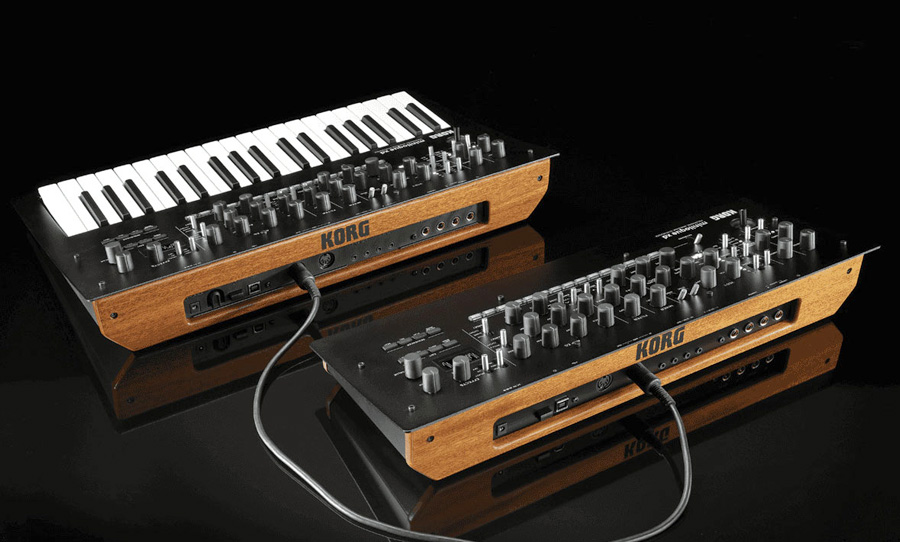The KORG Minilogue is the ultimate first stop on the analog synth journey. Versatile, affordable, and evolving, we take a closer look at a fan favourite.
KORG has been a well-recognised name in the synthesizer world since its inception in 1962. Having rocketed through the late ’70s to the mid-’90s with the squelches of the MS-20, legendary disco keys and pianos of the M1, the mid-90s ambient soundscapes of the Wavestation, and the 2000s notoriety of the microKORG — they had definitely influenced the field of sound design.
In the 2010s, KORG introduced the Volca series — the fun-filled analog and digital units that continue to grow in number. The company was, however, missing a deeper, more capable polysynth. An instrument that players could truly sink their teeth into.
Until 2016. With two VCOs per voice, four voices, an arpeggiator, an eight-step sequencer, a wild preset library, and various onboard effects, the KORG Minilogue’s announcement didn’t just make it one of the coolest entry-level synthesizers on the market, but one of the most approachable. It was the perfect solution for those who wanted to venture into the world of analog music in an instrument that wasn’t going to limit expression.

Tones on tap
The Minilogue and the Minilogue XD continue to be some of the exciting and intuitive synth voicing tools out there. The analog VCOs provide a wide breadth of tones — from sharp and stabby saws to warm and cozy pads — and the effects unit allows for fathoms of extra depth.
Whether you’re developing a techno lead or replicating the Blade Runner soundtrack, the Minilogue is the ultimate tool.
Signal path
Let’s begin with the Minilogue’s signal chain. Each patch can draw from two oscillators, with each oscillator being able to switch between four octaves and three waveshapes (triangle, saw and square).
They each have a fine-tune pitch adjustment knob and a further waveshaper, which both get sent to an additive mixer. VCO 2 can also be used as a modulator, with a knob shifting the cross-modulation, switches allowing it to act as a ring modulator for VCO 1, and a sync switch allowing both oscillators to line up.
With the additive mixer you can blend each of the sounds together, alongside a white noise generator should you wish to add more crunch to your sound. On the Minilogue XD, this noise generator is replaced by a multi-engine, which incorporates user-generated waveshapes or KORG’s own factory waveshapes into the mix.
Whether this be noise, tape hiss or a sine wave — it adds an extra level of flexibility into the soundscape and is one of the key components distinguishing the XD from the Minilogue. The XD also features a portamento function to slide between notes, and a switch for its four-voice modes (Mono, Poly, Chord voicing, and an arpeggiator with a latch function), where the original has buttons for these.
Both units have their own individual sequencers, which can receive information about notes and parameter motion and can be sped up or slowed down by a universal tempo knob. The XD has 16 buttons for this sequencer which are easily accessible from the front of the unit, whilst the original utilises the 8-step multi-use buttons and a button to switch between 1-8 and 9-16.
From the Minilogue’s filter two cutoff and resonance knobs, amp envelope parameters, an independent assignable envelope generator, and an LFO which can be sent to the cutoff, the shape or the pitch if you’re looking to create those evolving analogue textures.
Deep FX
To round it off, both Minilogues have an onboard delay unit that can be sent both pre and post filter to add depth to the sounds, while the XD has an additional reverb unit taken right from the KORG Monologue.
With multiple types of reverb (including a “submarine” machine), this unit allows the Minilogue’s analogue sound to breathe out into the atmosphere and create a beautifully endless soundscape. No wonder there are so many Vangelis inspired demos of this unit on YouTube.
Notwithstanding the clear advantages of the XD (an extra oscillator, killer reverb, superior sequencer), they both really are the ultimate machines for the burgeoning analog aficionado. Alongside all of the functionality above, the Minilogue series units are fully CV adjustable — which means that if you wish to use the unit as a sequencer, or as its own dual-oscillator unit in your future rack chain, you’re free to do so. There are also over 100 factory presets for inspiration, and the iconic oscilloscope display is a great tool to give you a second-by-second visual of how you’re manipulating the sound.
After many years in the digital domain, the Minilogue represented a rebirth of analog for the famed Japanese company. Sure, many of the Volcas are built on analog architecture, but with the Minilogue, KORG created a fully contained universe for hands-on experimentation in analog synthesis. What’s more, they made it accessible.



